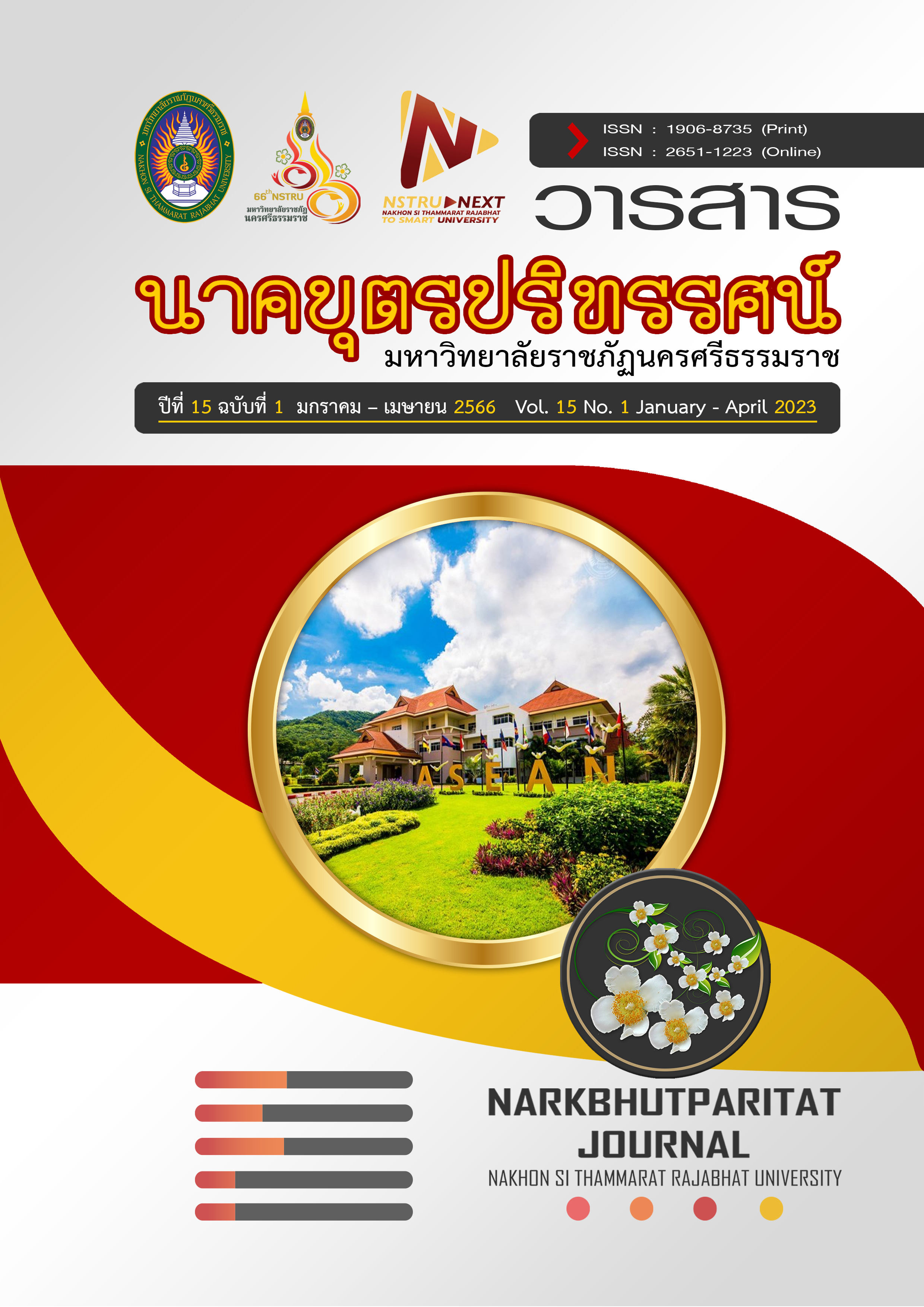Blended Learning Management with Periodic Table Application to Develop Learning Outcomes of the Periodic Table in Matthayomsuksa 4 Students, Banlat Wittaya School
Main Article Content
Abstract
The purposes of this research were 1) to develop a blended learning management plan with a periodic table application, 2) to develop learning outcomes on the periodic table of Matthayomsuksa 4 students, and 3) to study students' satisfaction towards learning management. The samples in the research were 44 Matthayomsuksa 4 students at Banlat Wittaya School from purposive sampling. The tools in this research consisted of 1) a blended learning management plan 2) the periodic table learning outcome test and 3) a satisfaction assessment form. The data were analyzed using mean, standard deviation, and percentage. The results showed that 1) the learning management plan developed for each issue had an IOC between 0.67-1.00, except for the measurement tools that had to be improved since the mean was 0.33. 2) the learning outcomes of all Matthayomsuksa 4 students passed the criteria with a mean score of =19.18, S.D. = 0.58 (full 20 points). 3) the result of student satisfaction assessment found that students were satisfied at the highest level ( =4.92, S.D.= 0.20). Satisfaction about the color of the illustration makes the students remember the content better. Students gain knowledge from the subject they have studied. The content is arranged from easy to difficult. The application of the periodic table makes learning more convenient to study and students have a better understanding of the content and lessons.
Article Details

This work is licensed under a Creative Commons Attribution-NonCommercial-NoDerivatives 4.0 International License.
References
Karnpisamai, S. & Tanunchaibutra, P. (2015). The Development of Grade 11 Students
Critical Thinking and Problem Solving Abilities through the Problem Based Learning Activities on The Topic of “Photosynthesis”. Journal of Education Graduate Studies Research, 9(3), 183-190. (in Thai)
Knowledge about IT. (2019). Applications Applications is. Retrieved 2019, November 29, from
https://yongyuttuy.wordpress.com/applications-%E0%B8%84%E0%B8% B7%E0%B8%AD
Ministry of Education. (1999). Learning standards and indicators in science learning subject groups (Revised Edition B.E. 2560). Bangkok: Author (in Thai)
Ngamwannakorn, C. (2019). Development of a Learning Application on Mobile Device in
English for Information Officer. Yala: Faculty of Humanities and Social Sciences Yala Rajabhat University. (in Thai)
Panich, W. (2012). The way to create learning for pupils in the 21st century. Retrieved 2014, February 8, from http://www. noppawan. sskru.ac.th. (in Thai)
Phetkliang, F. (2020). Blended Learning. Journal of Early Childhood Education Management,2(2), 67-79. (in Thai)
Phosuwan, A. (16 July 2015). Blended Learning Management (Blended learning). Retrieved, 2017 October 16, from http://www.snc.ac.th/KM/index.php/2015-05-25-04-27-16/2015-05-25-04-28-58/145-blended-learning. (in Thai)
Pipatsri, P (2020). The Development of Blended learning on KidBright programing for grade 9th students. (Educational technology Thesis) Burapha University, Faculty of Education. (in Thai)
Punmee, Y. (2014). Blended Learning and the Development of Thai Education Quality in the 21st
Century. Retrieved October 11, 2008 from http://nueducation.2013blogspot.com/. (in Thai)
Sriuttha, S. & Suramanee, S. (2015). Development of Game Application for Learning on the
Computer Tablet, Topic: The Computer Hardware for Mathayomsuksa 4. Journal of Project in Computer Science and Information Technology, 1(1), 18-25. (in Thai)
Wapitbenja, P., Klinnu, C & Srisom, N., (2015). The Development Learning managements System Application of Virtual Classrooms on Mobile Device. Industrial Technology Lampang Rajabhat University Journal, 8(2), 58-67. (in Thai)


